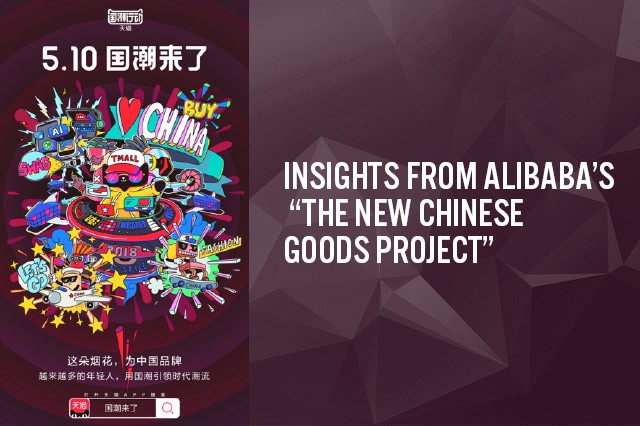Ecommerce
Alibaba Empowers Chinese Brands to Grow at Home and Abroad

Alibaba Group launched “The New Chinese Goods Project” on May 10. Alibaba set five goals to empower Chinese brands, including helping 700,000 Chinese brands to sell overseas through Tmall Global, Lazada and AliExpress.
Chinese “traditional” brands, defined as “intangible cultural heritage brands” or “time-honored brands” by Alibaba, are becoming “young” and growing fast in the online channel.Chinese brands are attracting younger generations (those born in the 1980s, 1990s and even the 2000s) more than older shoppers.
KEY POINTS
1. Five Goals of Empowering “The New Chinese Goods” and Cross-Border Sales
Alibaba has established five main objectives:
(1) Help the digital upgrade of 1,000 industrial clusters.(2) Build 200 Chinese brands that each generate ¥1 billion sales.(3) Support 200 traditional time-honored brands to achieve ¥100 million sales each.(4) Help 200,000 Taobao creative specialty stores to achieve ¥5 million sales each.
(5) Help 700,000 Chinese brands to sell overseas through Tmall Global, Lazada and AliExpress.
In particular, Alibaba has an ambitious goal of sending Chinese brands overseas. Alibaba’s confidence comes from its several years of experience operating and leading several brands overseas. For example, it has helped Chinese skincare brands such as Da Bao and Unifon to conduct cross-border sales through AliExpress. After expanding to Europe and the US, in March, AliExpress announced that it would partner with 1,000 Chinese beauty brands and help transform them from trade-oriented to brand-oriented companies.
Starting in April, Alibaba-owned Lazada, the largest e-commerce platform in Southeast Asia, simplified the process for Chinese merchants to sell overseas. Cross-border sellers no longer need an invitation to sell goods on the platform but can submit applications using a self-service system. Once the review is completed, they can become Lazada merchants.
2. The “Old” Chinese Brands Are Growing Fast
Alibaba defines “traditional” Chinese brands as “intangible cultural heritage brands” or “time-honored brands”. According to Alibaba, among the total of 1,128 China’s “time-honored brands”, 70% have opened stores on Tmall or Taobao. And 46 of those brands have had sales over 100 million purchase orders in 2018. The “intangible cultural heritage brands” include more than 10 Chinese cultural institutions including the Palace Museum (Forbidden City), whose brand has launched several products including lipstick.
Meanwhile, traditional brands are adapting to the trends and needs of the younger generation. Many young consumers are seeking more unique, character-driven and identifiable design. Some Chinese brands have incorporated modern aesthetic elements into their culturally rich brand design; other Chinese brands are aiming to be trendy and have an international focus — for example, Li Ning appearing in international fashion shows and winning international recognition. This has brought huge success and attraction to young consumers esp. those born in the 1990s and 2000s.
3. The Young Become the Main Consumption Force of New Chinese Goods
According to Alibaba, nearly 80% of Chinese brands are purchased by those born in the 1980s and 1990s. In 2018, among all purchase orders of Chinese brands, 39% were made from those born in the 1980s and 32% from those born in the 1990s.
Even those born in the 2000s are becoming a major consumption force. As the 2018 Chinese Digital Economy Development Report shows, the consumption power of those born in the 2000s are growing by 190%. And half of them believe Chinese goods are just as good as international ones.
China
How Thai SMEs can win over Chinese hearts?

Navigating thru China’s cross-border e-commerce: How Thai SMEs collaboration can win over Chinese hearts?
(more…)China
5 things we can learn from China’s e-commerce explosion
Online marketplace Alibaba saw sales growth of 39% in comparison with the event in 2016, suggesting that Chinese consumers are confident in their spending

China’s e-commerce market continues to see high double-digit growth year on year. The Double 11 event on 11 November 2017 – also known as Singles’ Day, when single people in China celebrate, and which has become a popular shopping holiday – was a clear example of how China’s consumption-led economy is evolving digitally. (more…)
China
How Mobile Commerce in Southeast Asia Will Leapfrog China
While mobile commerce is big in China – one-third of total online shopping in China is done through mobile – Southeast Asia’s mobile commerce is on a faster growth trajectory than the Dragon.

Prior to joining aCommerce, I spent three years working in Beijing that included a stint in the ecommerce business of a major PC manufacturer and retailer. (more…)







